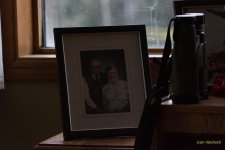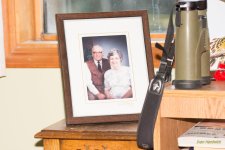By any chance, when at ISO 2500, could your Auto ISO Minimum ISO setting have been ISO 640?
I don't have a D7200 to verify it, but it is a very late mode, and I have assumed notions that it works like the other late models (since D800 in 2012), in that IF a hot shoe flash (not speaking of internal flash), if a hot shoe flash is recognized as in use, that recent Auto ISO will not advance more than 2 stops above Minimum ISO (4x the Minimum ISO setting).
So either I am incorrect, or your D7200 Minimum ISO was 640?
If you reset your Minimum ISO to ISO 100, my theory is that then (with hot shoe flash), D7200 Auto ISO would not increase above ISO 400 (2 stops above Minimum, on late model cameras, if with hot shoe flash). But this would reduce the flash range about 3 stops, or to about 1/9 range however.
Also, I suppose you know that your 1/500 second shutter speed is activating Auto FP to cause HSS flash mode (to allow the high shutter speed)... This is NOT regular speedlight mode, anything but... Instead, HSS mode reduces your maximum flash power to about 20% of maximum (to allow the faster shutter). I say 20%, its power is reduced about 2.3 stops. And the HSS flash has no motion stopping capability. Speedlight mode has a lot however, at power levels lower than absolute maximum.
SB-600 manual page 35 shows Guide Numbers for regular speedlight mode (max power at 85mm at ISO 100 is GN 131/feet) ...
and SB-600 manual page 76 shows Guide Numbers for Auto FP HSS mode (max at 85mm at ISO 100 is GN 26/feet). (this is at 1/300 second shutter speed, later flashes use 1/500 second as reference).
So at 1/300 second (the GN spec, page 76), and at f/6.3, HSS mode max power can do GN 26/6.3 = 4.1 feet distance.
However, at ISO 2500, the Guide Number 26 converts to GN 131, so that GN 131/f6.3 = 20.8 feet (and about double this range for a fill level down two stops.. not sure how bright your ambient is however, 40% more range for fill down one stop might be more reasonable?)
For HSS mode (flash becomes a continuous light), using 1/500 second is simply an Equivalent Exposure, so 1/500 second is about 2/3 stop less effective power used (than this 1/300 number computed).
In contrast, for regular speedlight flash mode (with shutter speed 1/250 second, to avoid Auto FP HSS mode),
then GN (page 35) is GN 131 already, at ISO 100.
(actually camera Auto FP (1/320) mode would allow 1/320 second shutter there too.
Lots of numbers, sorry....
But it means that since the flash mode changes drastically,
ISO 2500 at 1/300 second (FP HSS mode)
has exactly the same possible flash maximum distance range as
ISO 100 at 1/250 second (speedlight mode).
Or for example, ISO 400 would allow stopping the lens down two stops.
Or for example, ISO 400 would allow reducing flash power by two stops, which would be at least 1/3400 second motion stopping (SB-600 page 88).
Or maybe one stop of each, still 1/1600 second motion stopping at f/9.
That is pretty interesting to me.
And there are other interesting things that can also happen.
If using camera A mode with Auto FP on (with a hot shoe flash), normal light variations becoming brighter (if working around this 1/250 second threshold value) can let A mode increase shutter speed higher than the Auto FP speed, which of course suddenly shifts the flash to HSS mode, and we immediately notice that the flash loses about 80% of its power capability. So it might be sufficient power one moment, and next similar shot might be rather insufficient flash power, simply due to mild normal A mode variations. (we can turn Auto FP off however.

)
Camera P mode will not allow that. Camera P mode will increase aperture to maximum f/22 or f/32 value before it will allow Auto FP to change the shutter speed and flash mode to HSS.





